Zbogom Croazia, zdravo Montenegro!
21 agosto 2025
- ENGLISH VERSION BELOW -
Lunedì 11 agosto partiamo per Uvala Lapad, un ancoraggio appena dietro l'imboccatura del porto di Dubrovnik, che dovrebbe offrirci protezione dalla Bora prevista per la notte.
Partiamo a vela, ma dopo qualche ora dobbiamo accendere ogni tanto il motore per prendere la zona di vento successiva e coprire le 19 miglia che ci separano dalla nostra destinazione.
Arriviamo con calma nel pomeriggio e riusciamo ad ancorarci in un ottimo punto di sabbia a ridosso delle boe di delimitazione dei tanti locali con accesso al mare della baia e abbiamo tutto il tempo per farci un bel bagno, preparare il pranzo per la lunga giornata che ci aspetta e cenare con calma davanti ad un bel tramonto.
Come da previsioni, la bora ha cominciato a soffiare alle 2200 e nonostante fossimo tranquilli per la tenuta della nostra ancora, gli strattoni e i rumori causati dalle raffiche non ci hanno fatto passare una nottata molto riposante.
Alle 0800 il vento si è finalmente calmato e siamo partiti alla volta del molo della dogana di Dubrovnik per sbrigare le pratiche di uscita dalla Croazia, visto che siamo diretti in un Paese extracomuninario. Prima bisogna andare dalla Capitaneria di porto per stilare la lista dell'equipaggio e dove viene controllato che la tassa di navigazione sia stata pagata, poi si va dalla polizia per il controllo dei passaporti e dei documenti della barca e infine alla dogana per eventuali dichiarazioni e per presentare la lista dell'equipaggio.
Per fortuna si trova tutto nello stesso edificio e dopo poco più di mezz'ora, possiamo già sciogliere gli ormeggi e partire per il Montenegro!
Usciti dalla baia possiamo ammirare la città fortificata di Dubrovnik in tutta la sua maestosità.

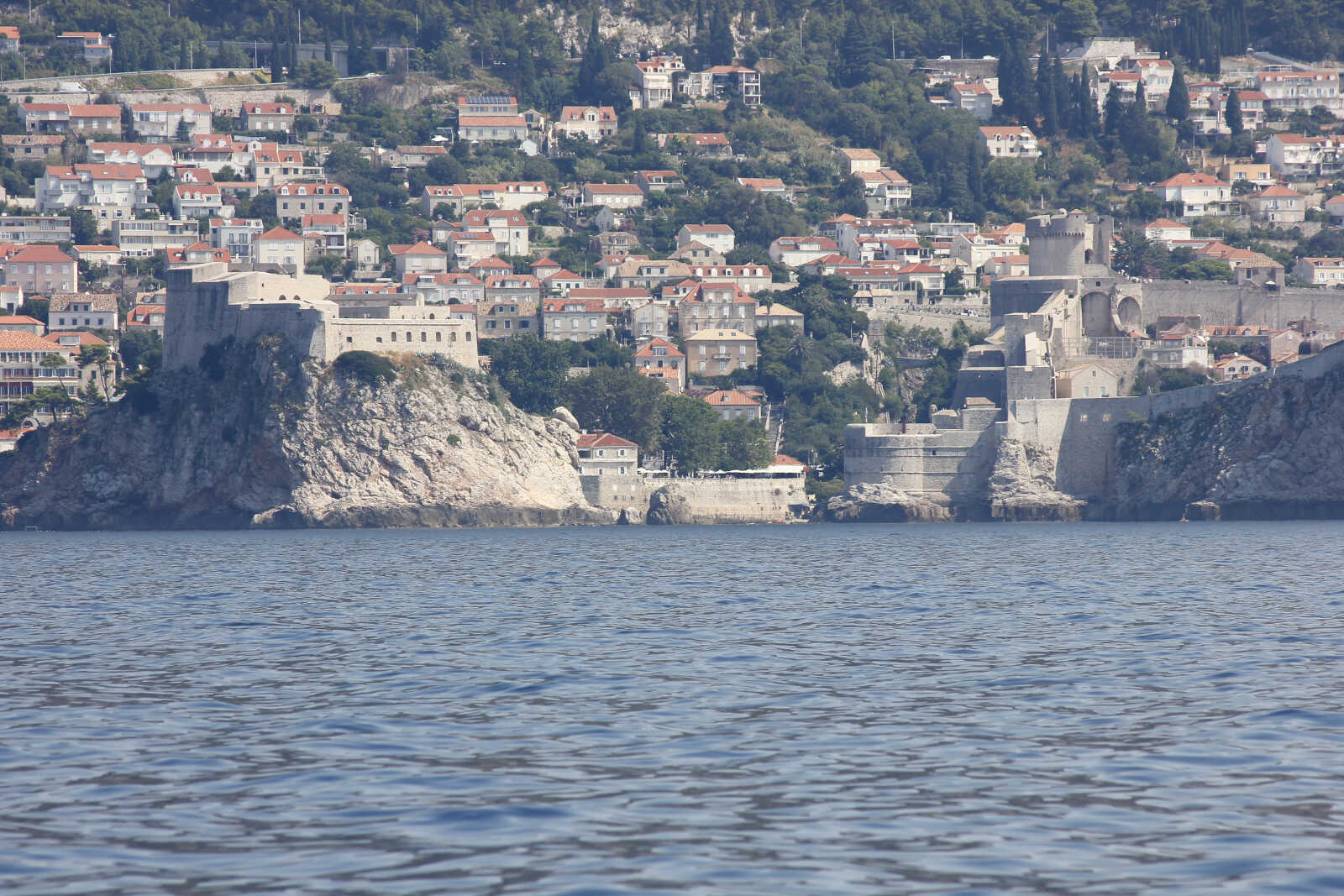
Passata Dubrovnik è tutto un susseguirsi di alte scogliere fino all'ultima città croata della costa: Cavtat, Ragusa Vecchia in italiano, dove non possiamo fermarci avendo già sbrigato le pratiche di uscita dal Paese.
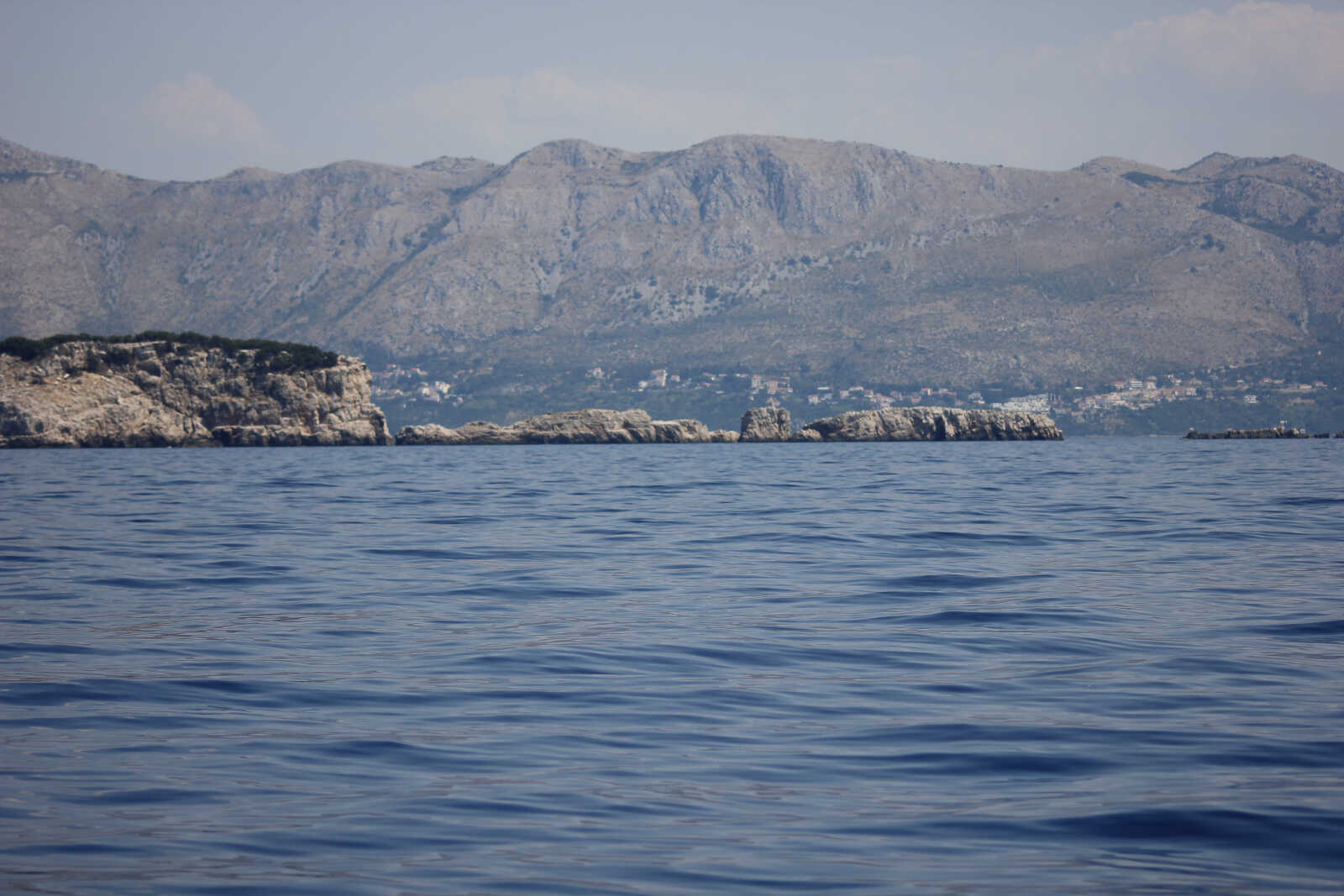
Il vento soffia nella direzione giusta, ma dopo qualche ora troppo debolmente per percorrere 35 miglia in una giornata quindi accendiamo anche il motore. Dobbiamo arrivare al molo della dogana montenegrina a Zelenika entro le 1900 per essere sicuri di poter fare le pratiche d'ingresso il giorno stesso.
Una veleggiata così calma ha però anche i suoi vantaggi: sono riuscita a lavorare al computer per ore comodamente seduta all'ombra delle vele, prima in pozzetto e poi sulla tuga :)
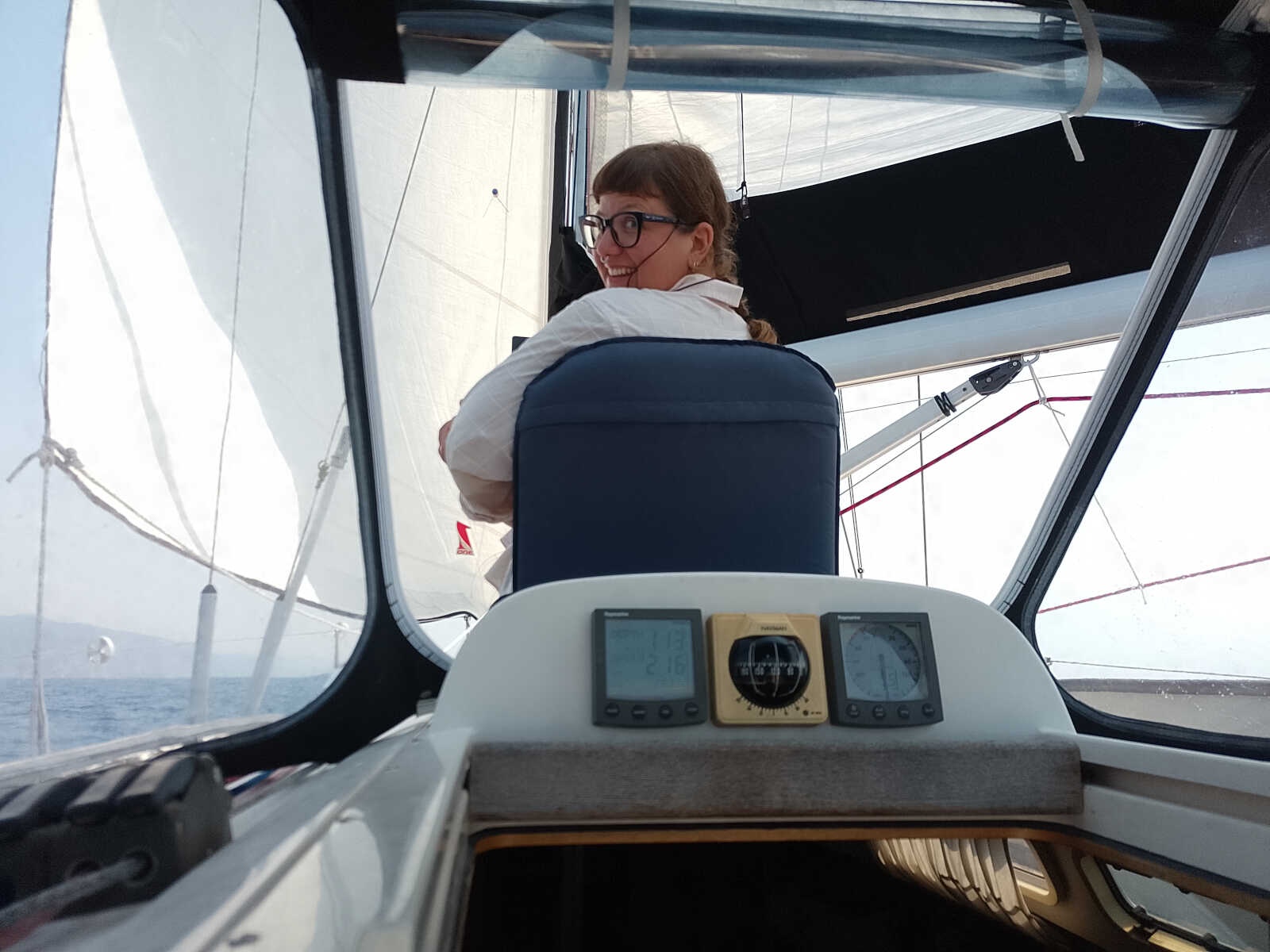
Quando ormai ci eravamo rassegnati al solo motore, il vento si è fatto più costante e abbiamo quindi potuto riaprire il genoa e entrare a vela nelle Bocche di Cattaro! Nella zona di confine c'erano diverse barche all'orizzonte e sotto costa solo un paio di barche locali, ma appena imboccato l'entrata dell'ampio porto naturale delle Bocche il traffico è aumentato all'istante: motoscafi, barchini, traghetti, barche da escursioni giornaliere, super yacht e perfino una nave da crociera!
Superato il traffico frenetico, dopo 9 ore di navigazione attracchiamo quindi al molo della polizia di frontiera: il comandante va a sbrigare le pratiche di ingresso, mentre la marinaia controlla che i parabordi siano sufficienti per proteggere la barca dal muro di cemento con tanto di travi di ferro arrugginito del molo della dogana, pensato per le grandi navi commerciali e non sicuramente per le piccole barche da diporto.
Questa volta c'è da girare un po' di più perché gli uffici sono sparsi nella zona, ma tutti gli ufficiali sono cortesi e parlano addirittura italiano! Dopo un'oretta è (quasi) tutto fatto: abbiamo il timbro sui passaporti, la vignetta da attaccare alla tuga e la bandiera di cortesia del Montenegro (che non avevamo trovato in Italia, ma abbiamo potuto acquistare in Capitaneria) da issare al posto della bandiera Q (che segnala che non sono ancora state fatte le pratiche di ingresso nel Paese), resta solo da pagare la tassa di soggiorno all'ufficio del turismo, ma possiamo farlo il giorno dopo.
Finalmente possiamo toglierci da questo molo insidioso e andarsi ad ancorare per la notte nella baia di Zelenika dove brindiamo con una birra fresca al nostro arrivo in Montenegro!
Dopo una bella dormita partiamo alla ricerca dell'ufficio in cui pagare la tassa di soggiorno. Dopo diversi tentativi, troviamo l'Ufficio del Turismo giusto (dove parlano inglese e anche italiano!) e abbiamo una bella sorpresa: paghiamo solo 14 euro in totale per un soggiorno di un mese essendo la nostra barca nella categoria più piccola!
Sulla strada del ritorno troviamo per caso una panetteria buonissima ed super economica rispetto alla Croazia, dove proviamo i nostri primi prodotti da forno montenegrini, oltre al solito burek.
Al supermercato e dal fruttivendolo i prezzi sono comparabili a quelli italiani, ma nelle piccole trattorie o rosticcerie la carne e il pesce costano molto meno e mangiamo bene con 15-20 euro a testa! Anche meglio visto che non cuciniamo mai carne in barca e questi non sono ancoraggi dove andare a pescare.
La prima cittadina nelle Bocche di Cattaro è Herceg Novi. Il lungomare roccioso è un susseguirsi di terrazze di bar e locali e piccolissime spiagge di ghiaia, mentre il centro storico, raggiungibile da una scalinata che costeggia le mura, si inerpica sulla montagna a picco sul mare, ed è un susseguirsi di piazzette e palazzi veneziani, chiese cattoliche e ortodosse, torri austroungariche e bastioni turchi, che testimoniano la lunga storia e le diverse dominazioni subite. Nel fresco della sera ci siamo avventurati anche nella zona più periferica sopra al centro ed è stato un piacere vedere i giardini e gli orti delle case e passeggiare per le stradine tranquille con le persone sedute a chiacchierare e i bambini a giocare.
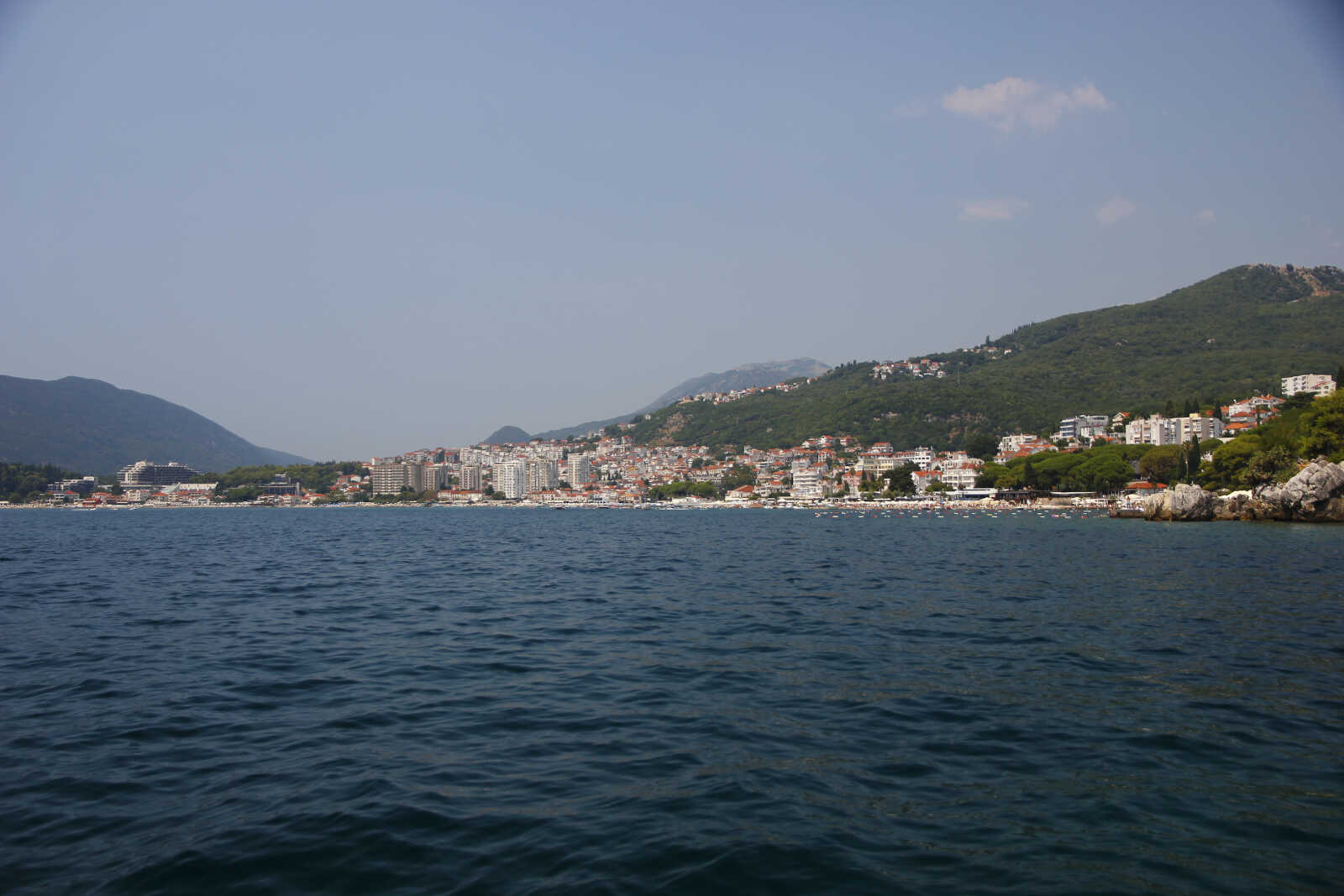
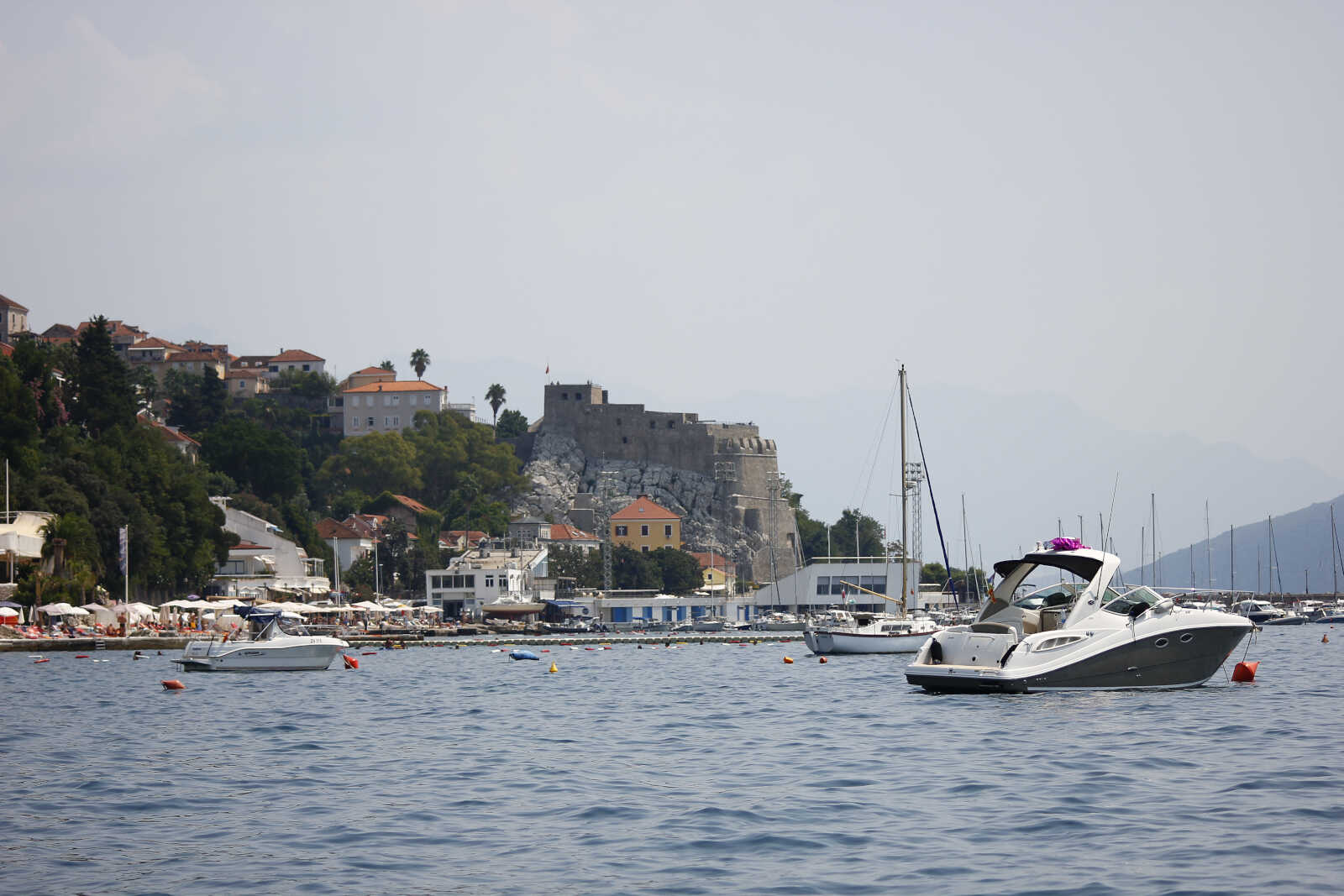
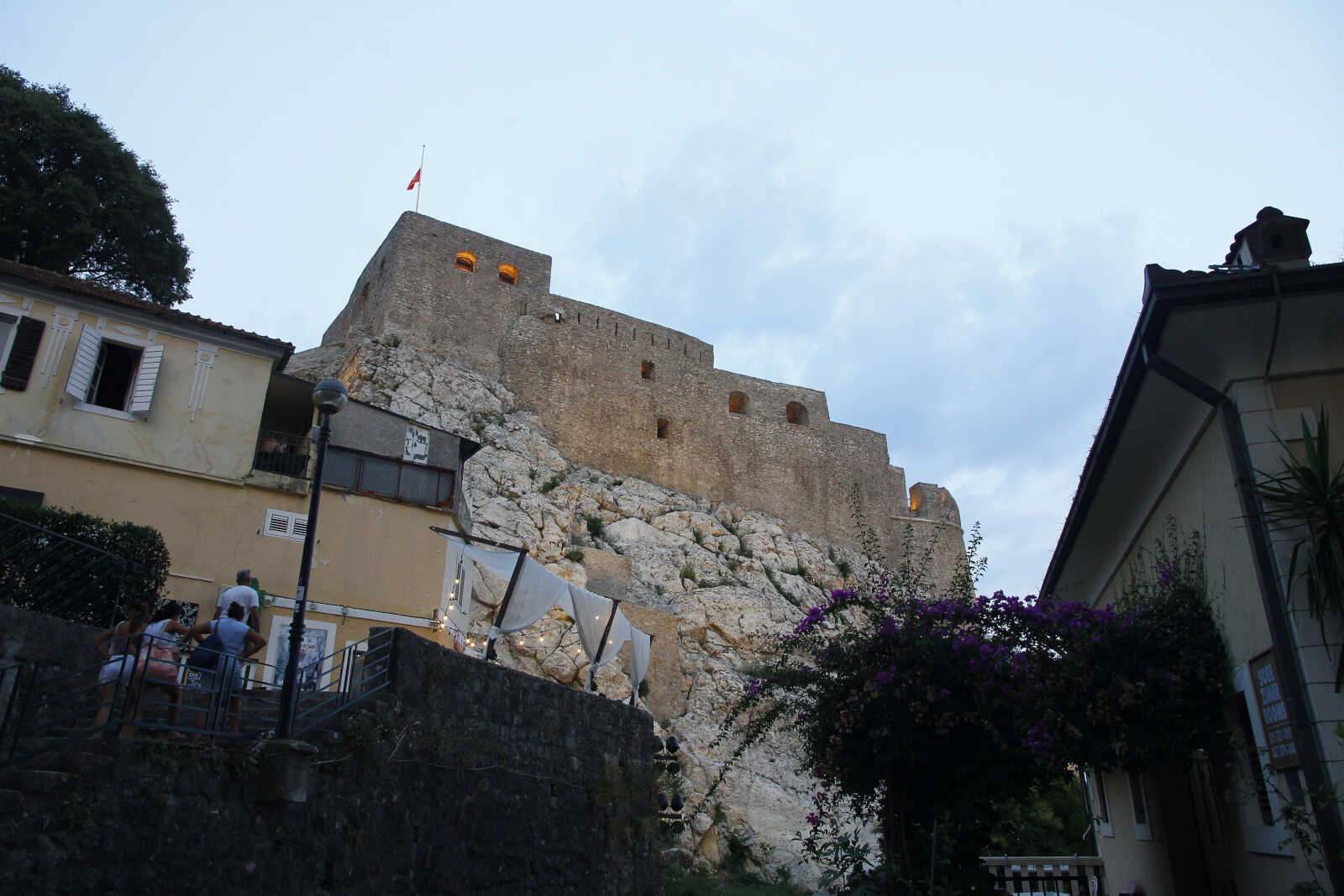
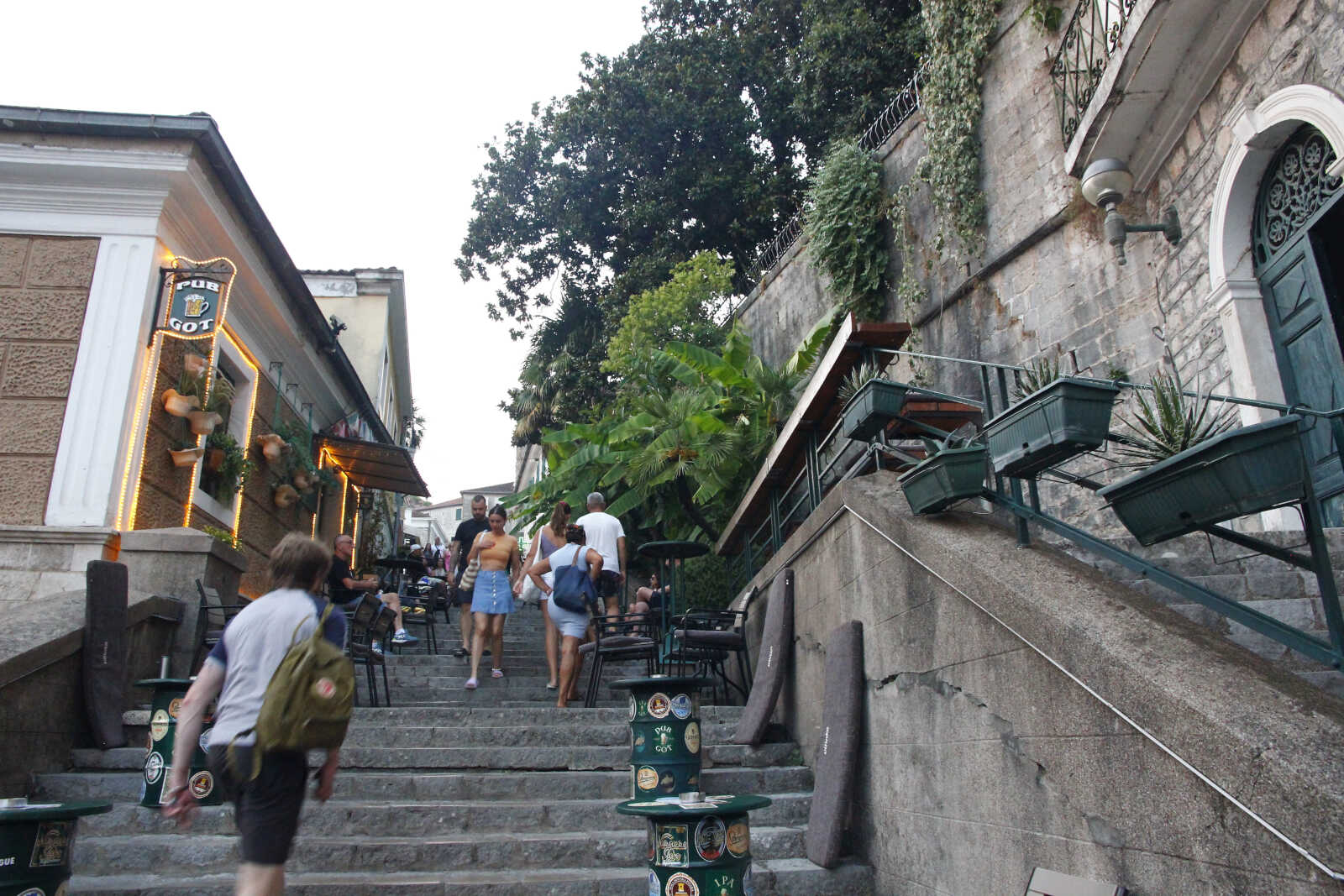
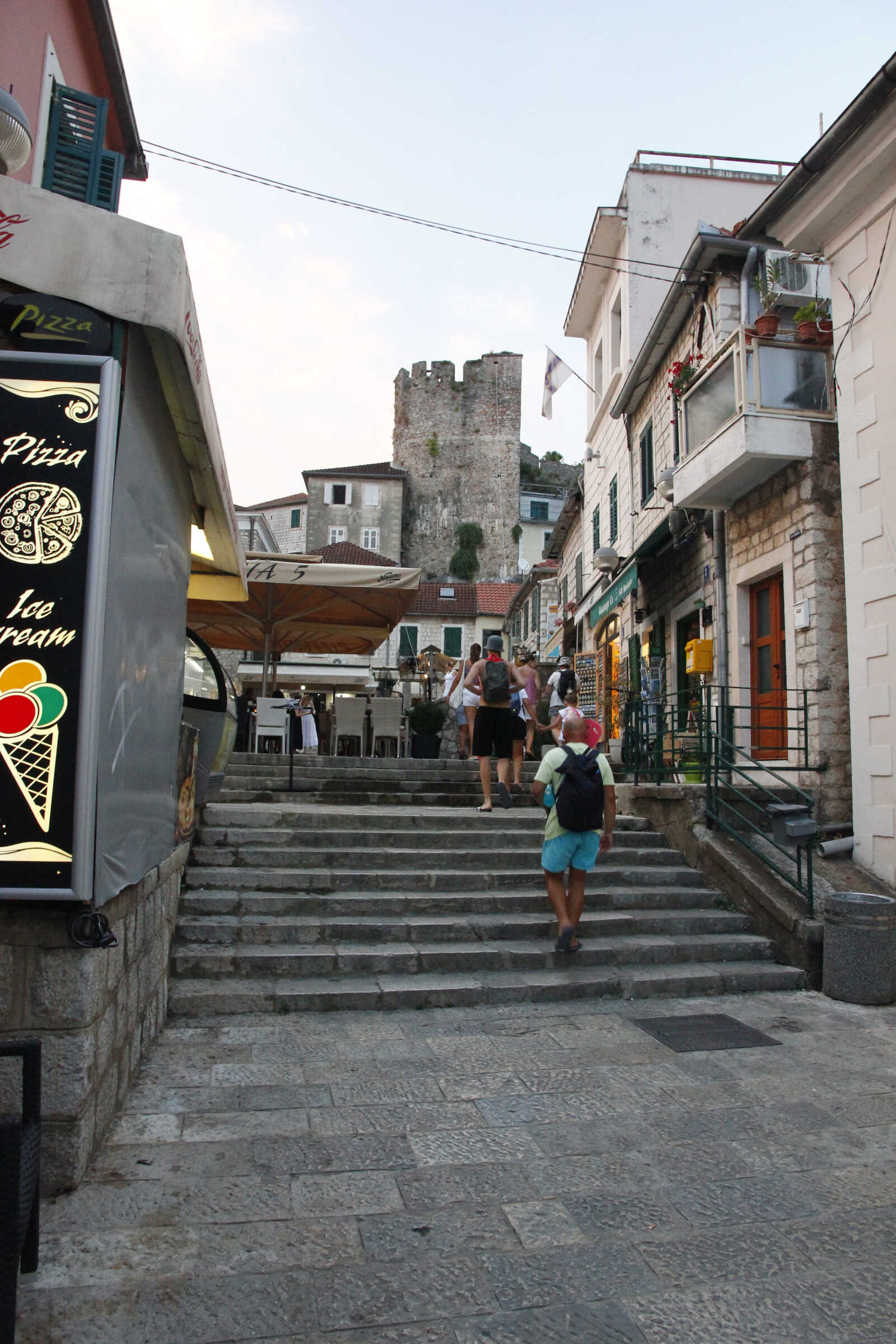
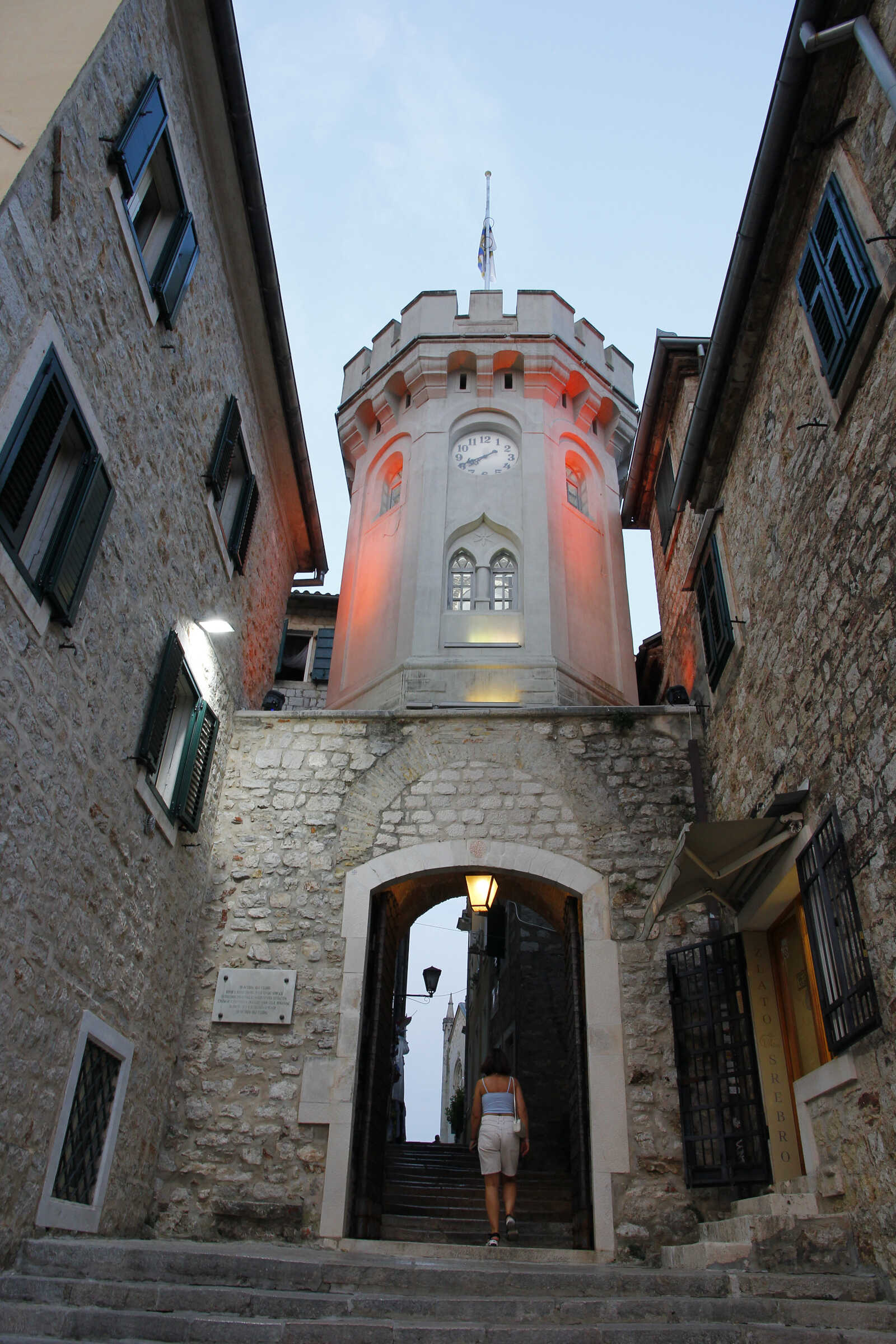
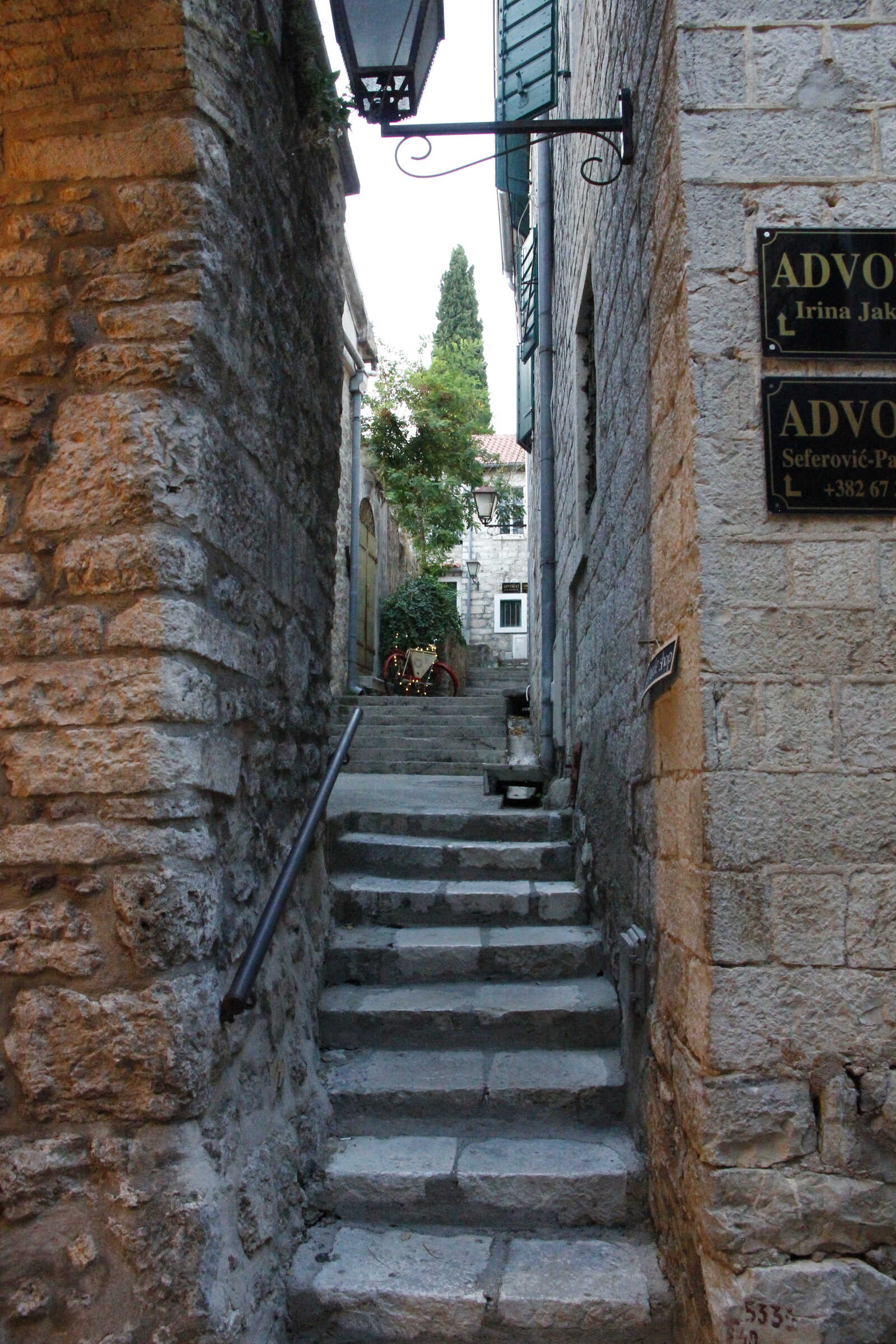
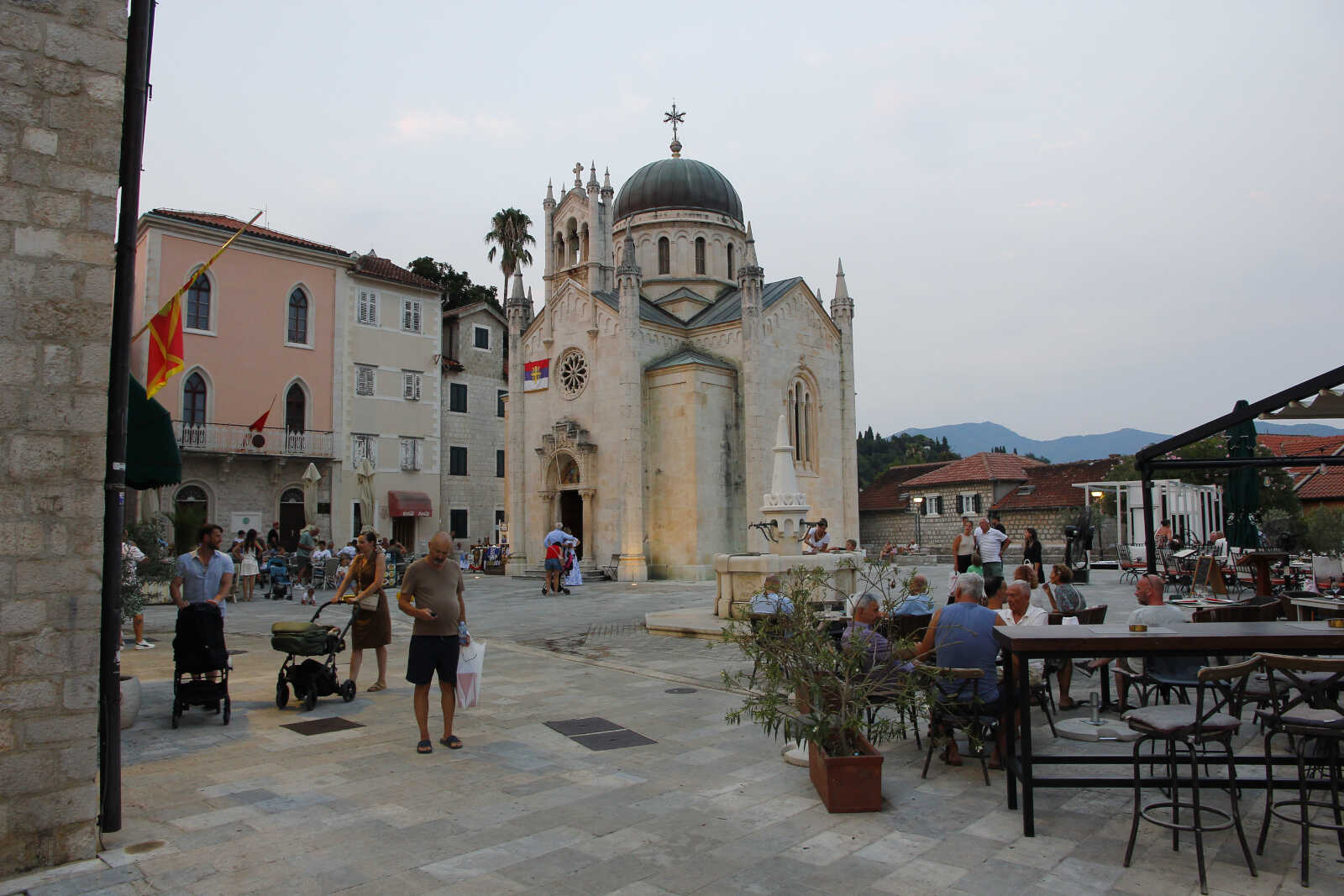


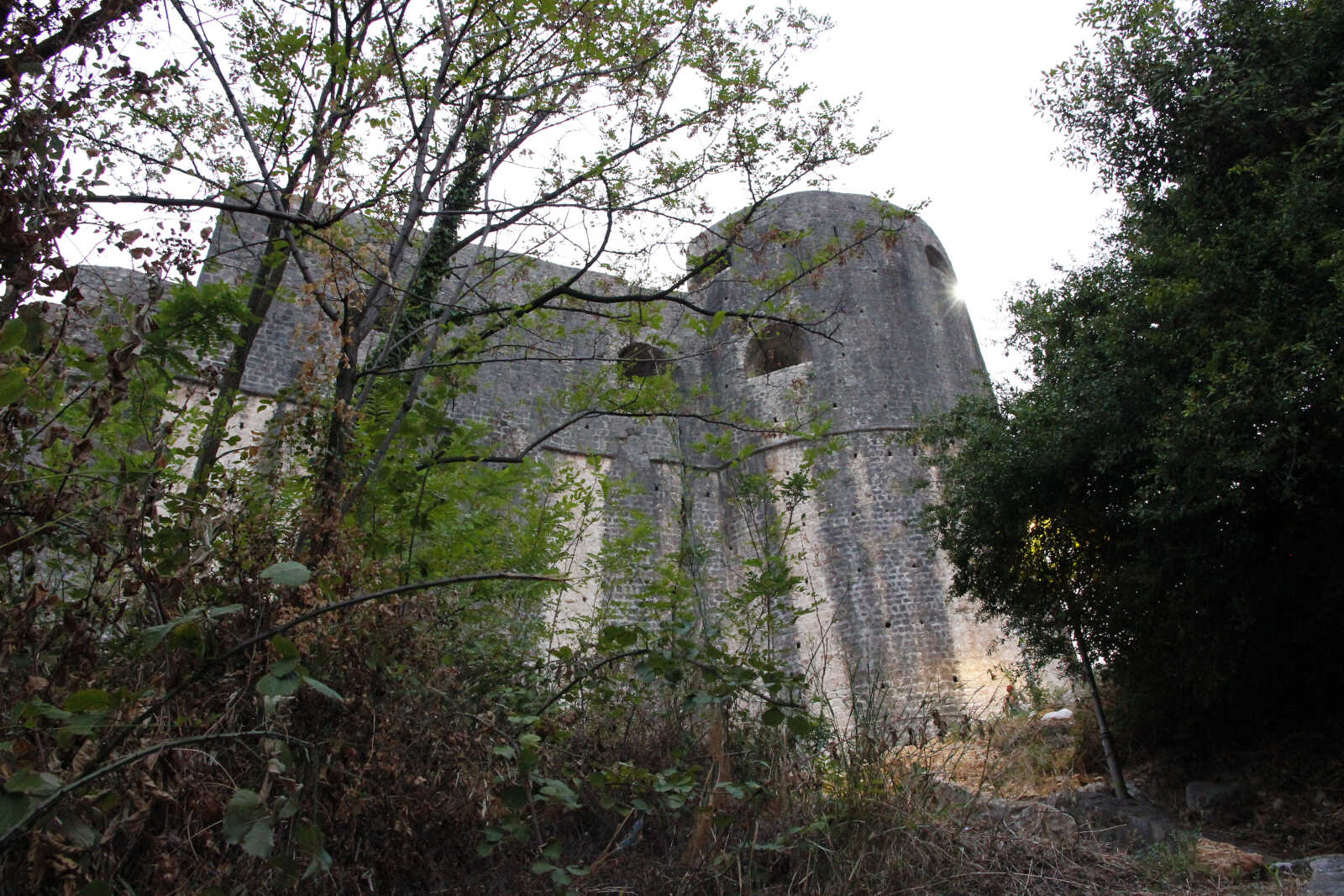
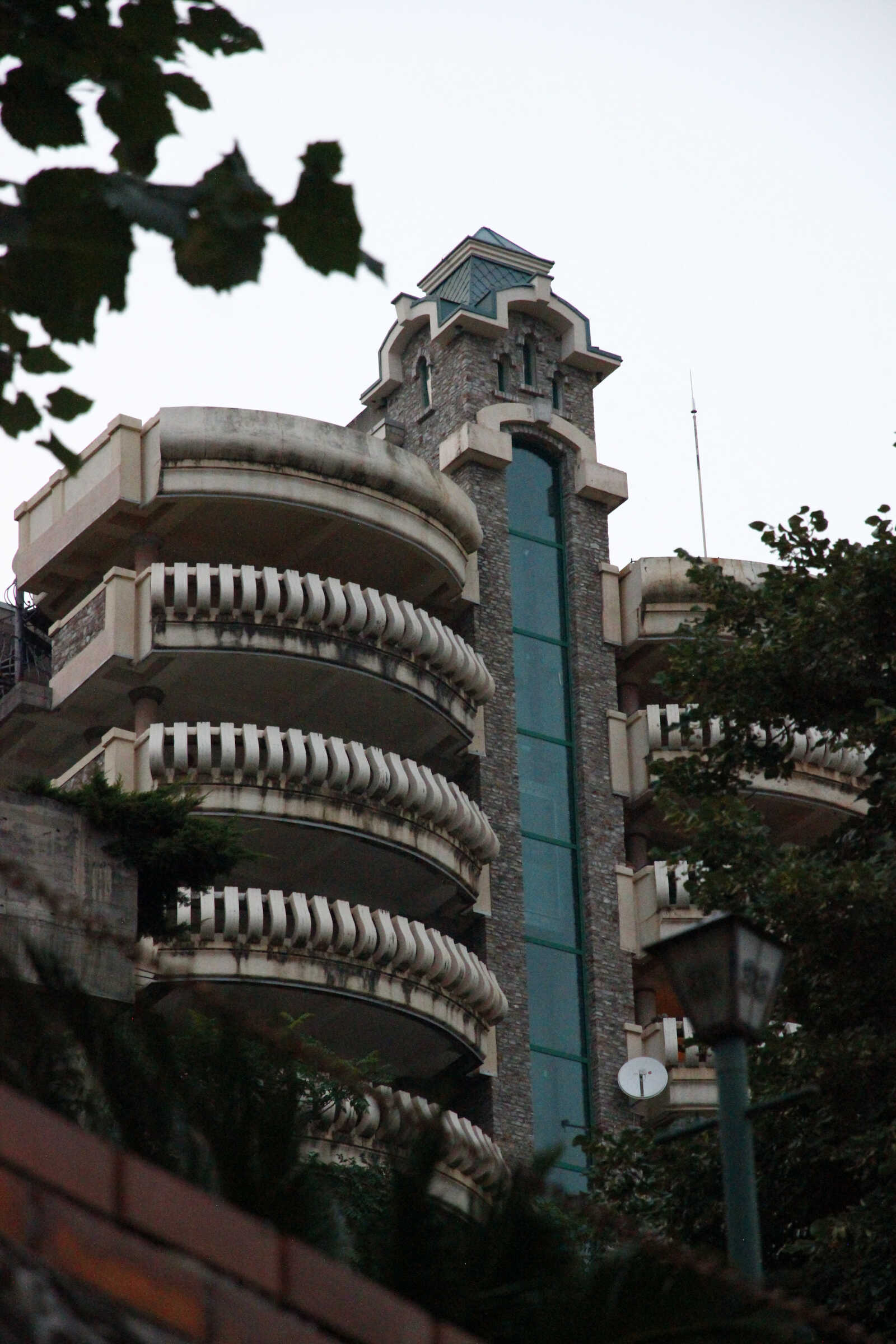
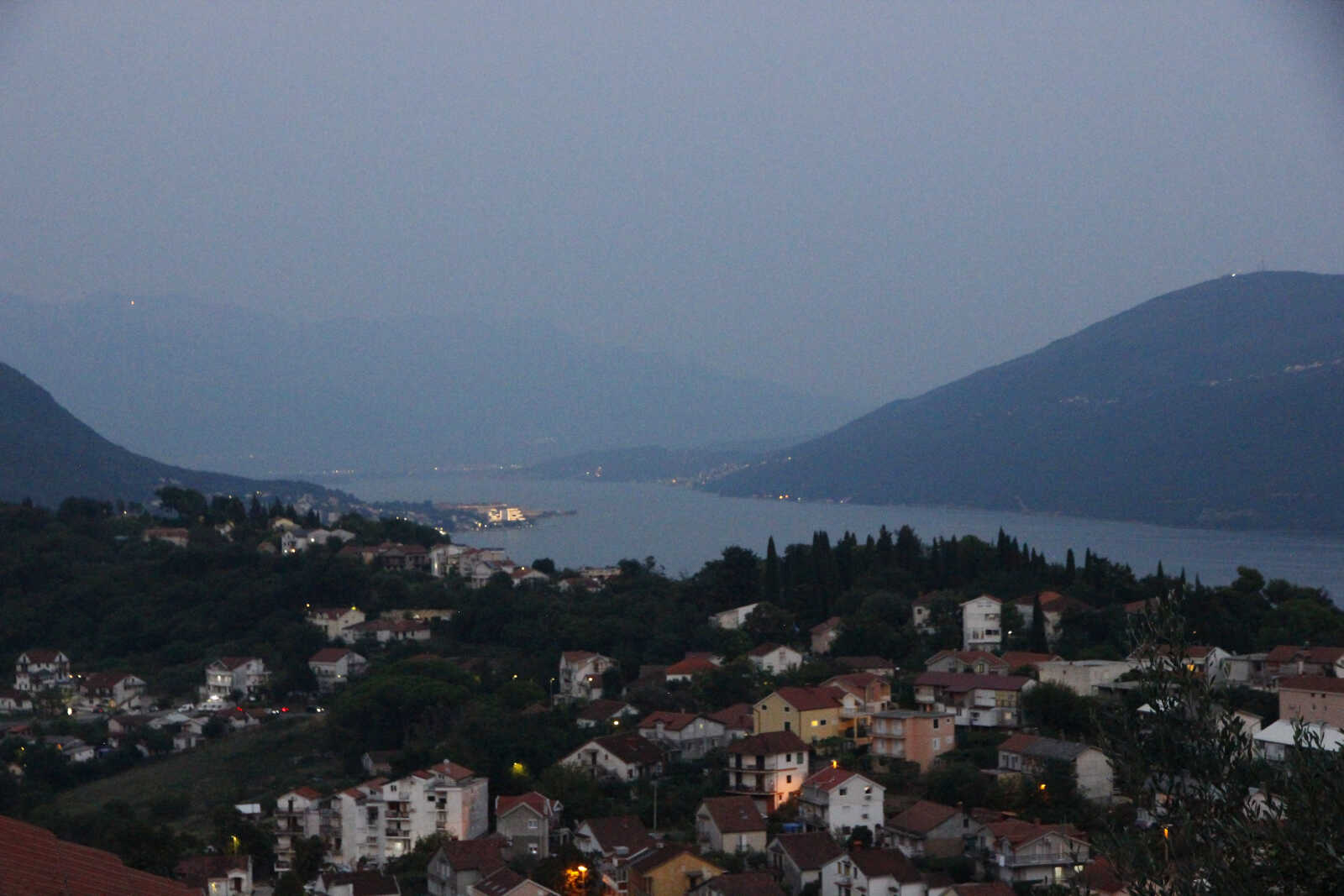
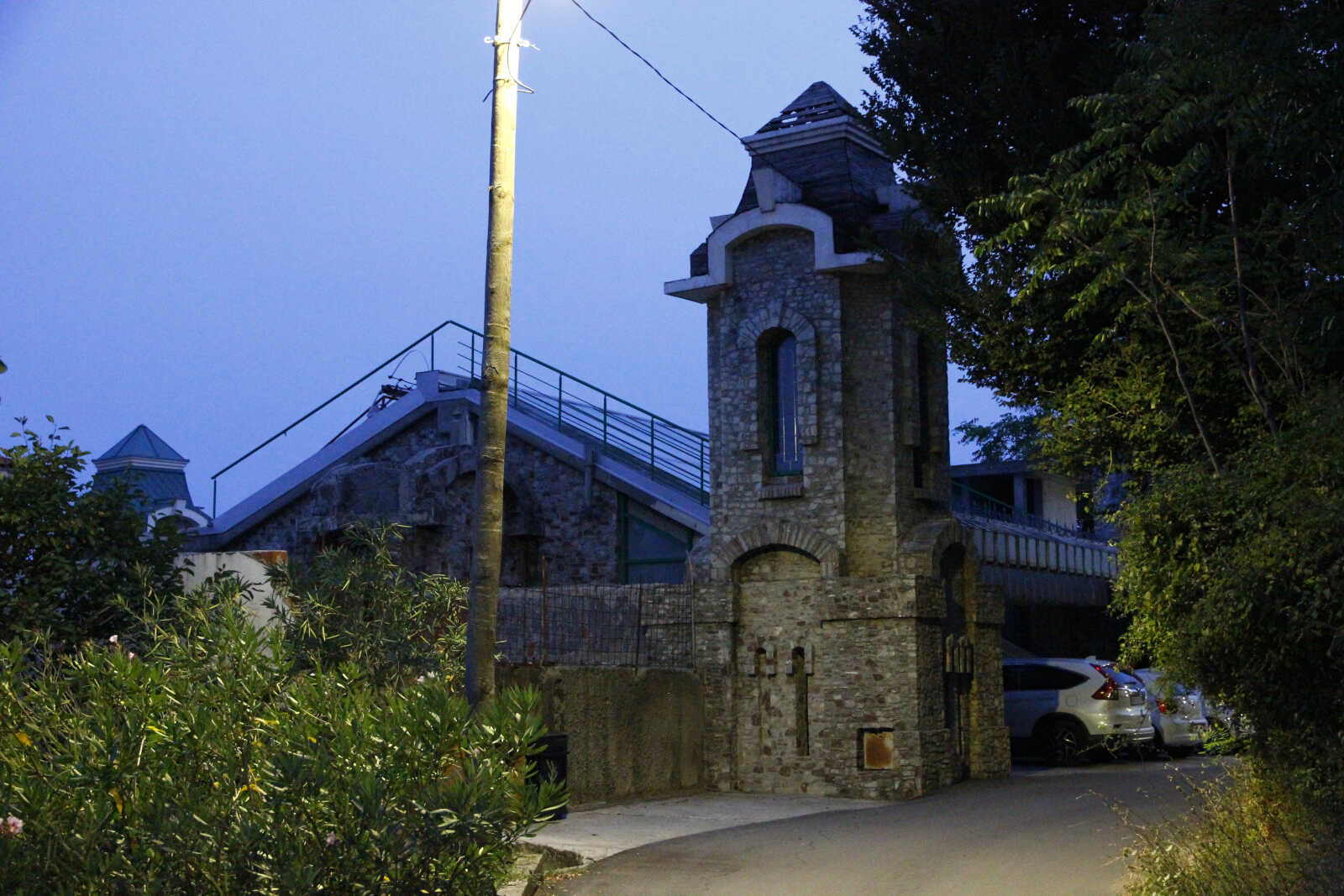
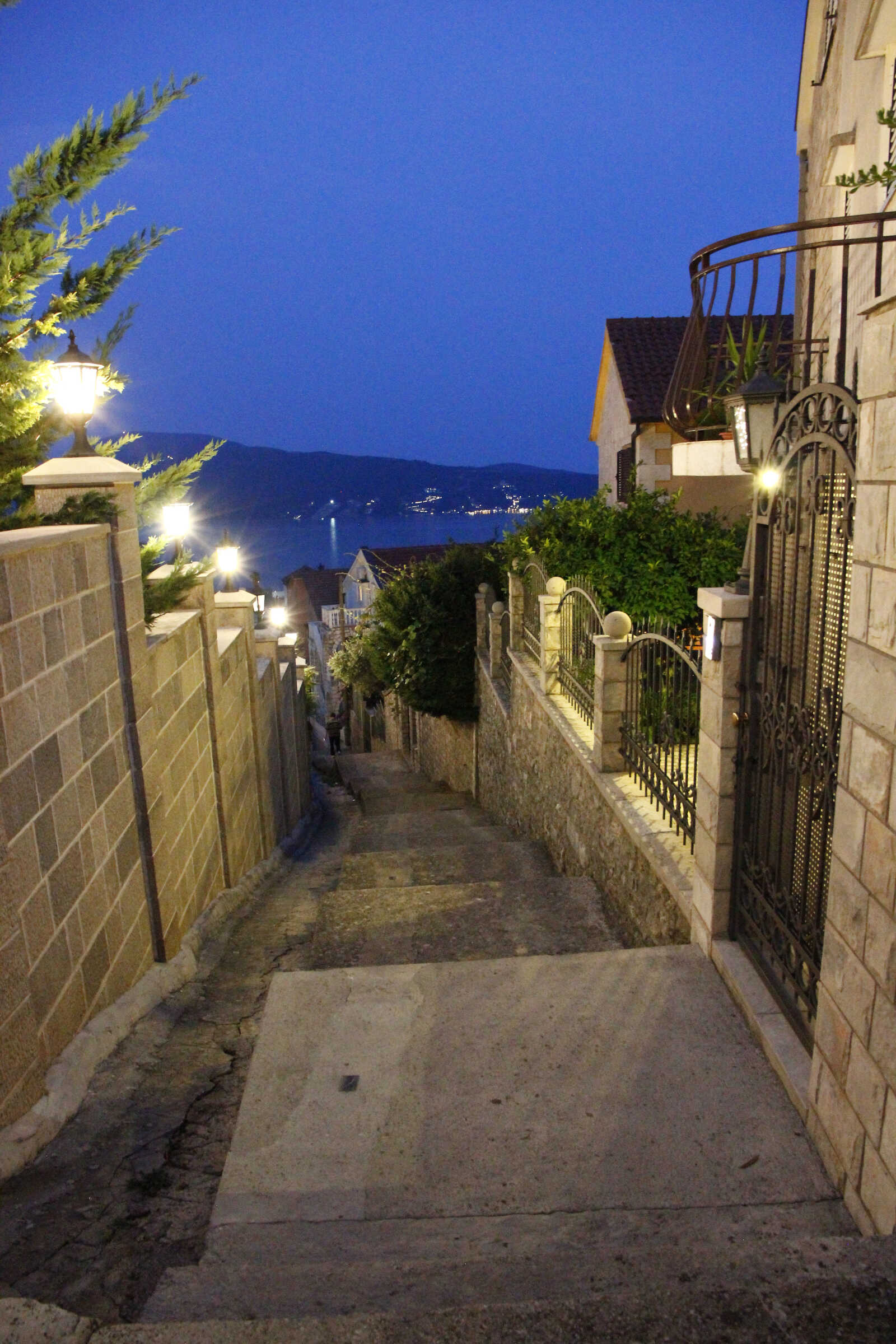
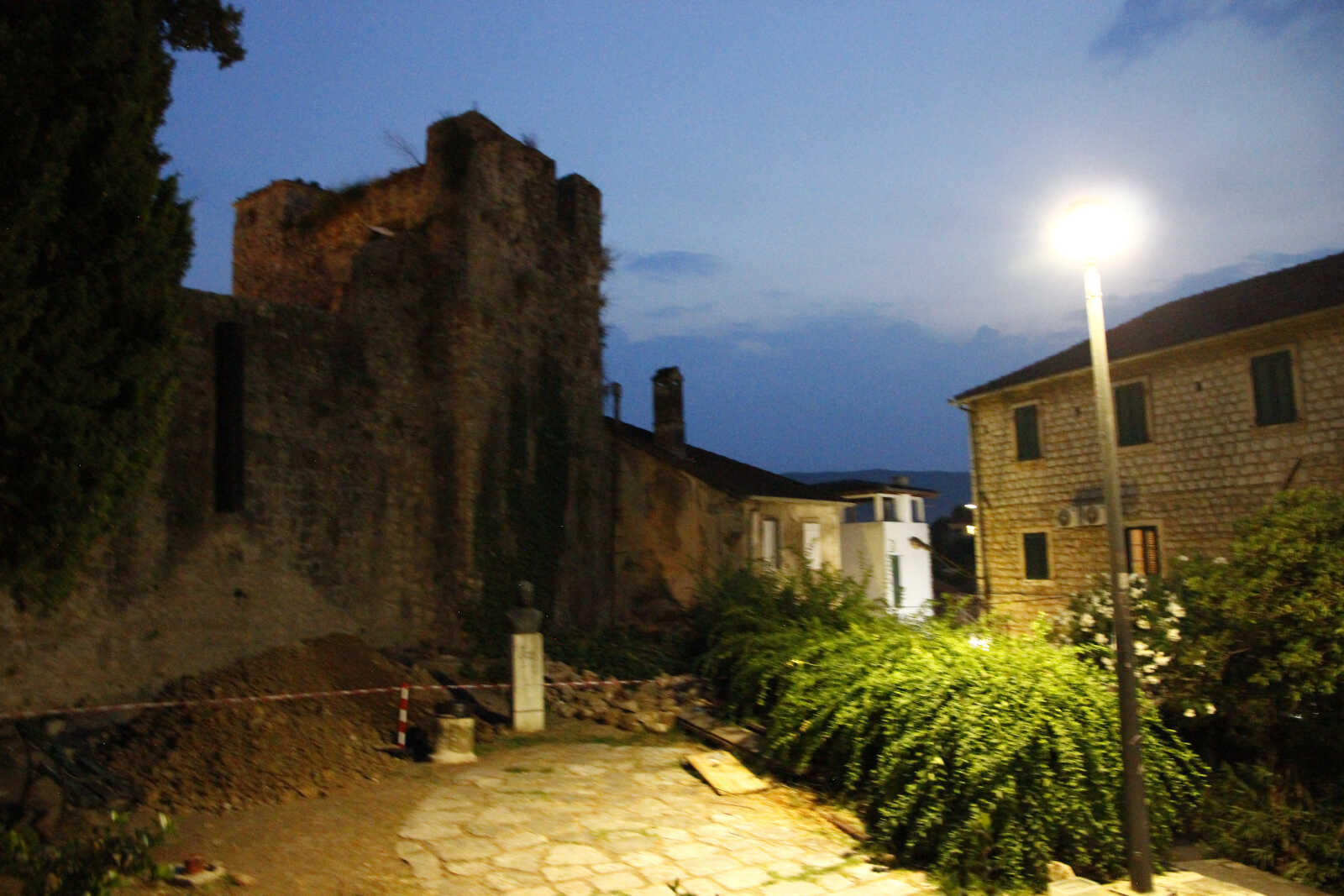
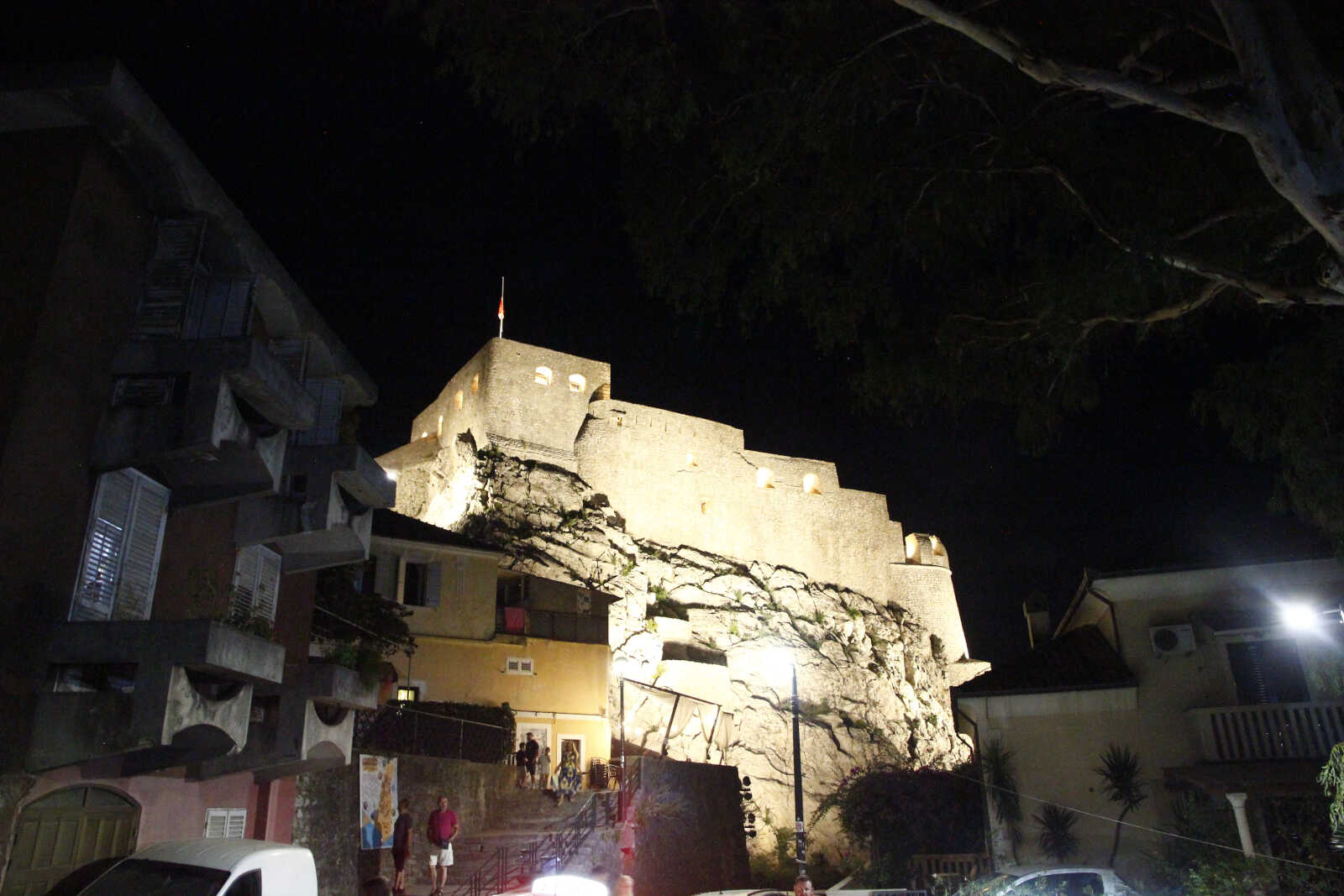
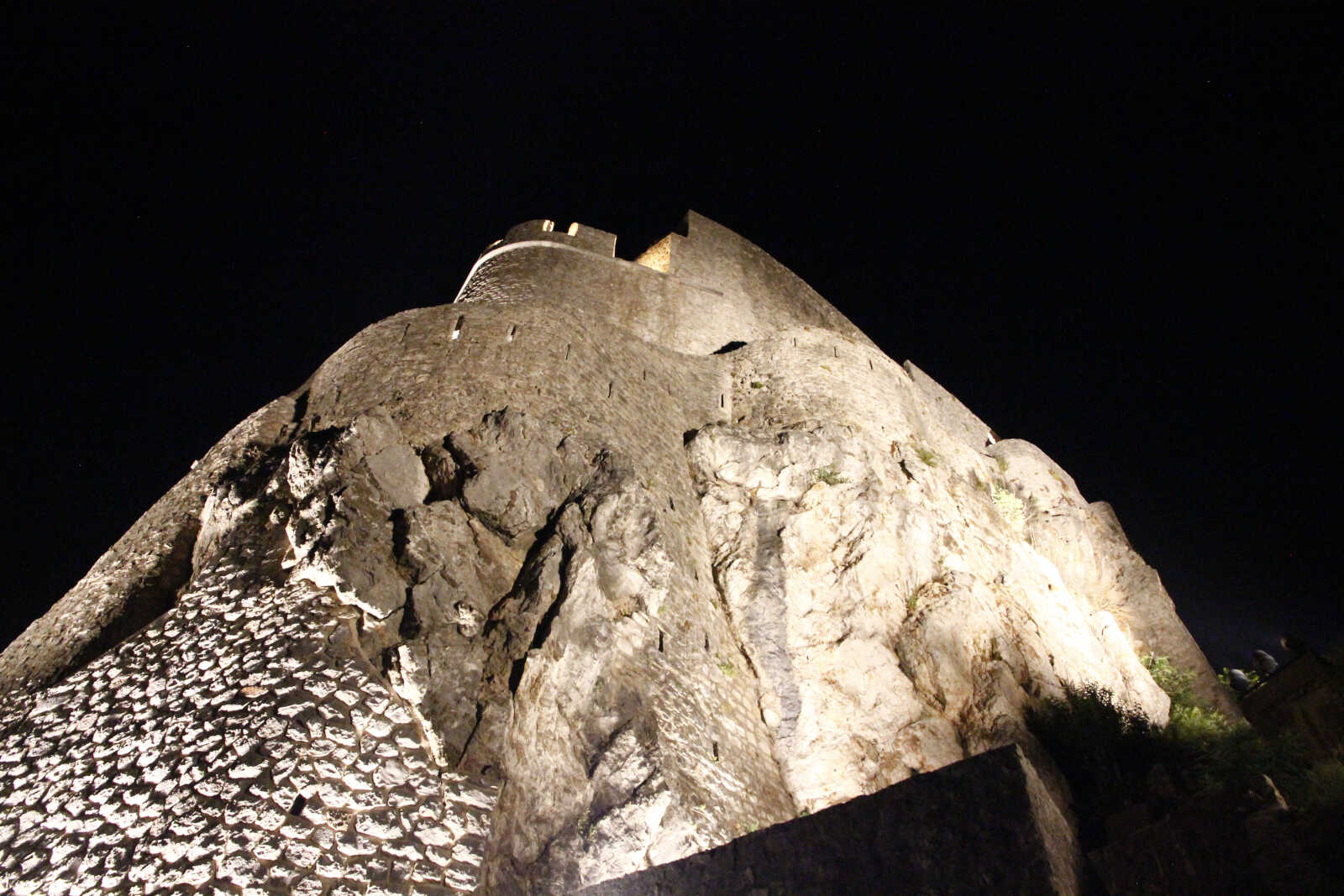
Zbogom Croatia, zdravo Montenegro!
21 Aug, 2025
On Monday, August 11, we departed for Uvala Lapad, an anchorage just behind the mouth of the port of Dubrovnik, which should offer us protection from the Bora scheduled for the night.
We started sailing, but after a few hours we had to start the engine from time to time to reach the wind areas and cover the 19 miles that separated us from our destination.
We arrived with no stress in the afternoon and managed to anchor in an excellent point of sand near the delimitation buoys of the many bars and hotels with access to the sea of the bay and we had all the time to swim, prepare lunch for the long day that awaited us and have dinner in front of a beautiful sunset.
As expected, the Bora began to blow at 2200 and although we were confident for the holding of our anchor, the tugs and noises caused by the strong wind gusts did not make us spend a very restful night.
At 0800 the wind finally calmed down and we left for the Dubrovnik customs dock to carry out the check-out procedures from Croatia, since we are heading to an extra EU country. First you have to go to the Harbour Master's Office to fill out the crew list and where it is checked that the navigation tax has been paid, then you go to the police to check the passports and the documents of the boat and finally to the customs for any declarations and to present the crew list.
Fortunately, everything is in the same building and after just over half an hour, we could already loosen the moorings and leave for Montenegro!
Leaving the bay we could admire the fortified city of Dubrovnik in all its majesty.


After Dubrovnik it is all a succession of high cliffs until the last Croatian city on the coast: Cavtat, where we cannot stop having already check-out of the country.

The wind was blowing in the right direction, but after a few hours too weakly to sail 35 miles in a day so we also started the engine. We had to get to the Montenegrin customs dockin Zelenika by1900 to make sure we could check-in the same day.
However, such a calm sail also has its advantages: I was able to work at the computer for hours comfortably sitting in the shade of the sails, first in the cockpit and then on deck :)

When we had resigned ourselves to motoring, the wind became more constant and we were therefore able to reopen the genoa and sail into the Bay of Kotor! In the border area there were several boats on the horizon and only a couple of local boats along the coasts, but just after entering the large natural port , traffic increased instantly: speedboats, small motor and sailing boats, ferries, daily excursion boats, super yachts and even a cruise ship!
Once we pass the hectic traffic, after 9 hours of navigation we docked at the border police dock: the captain jumped off to carry out the check-in procedures, while the sailor remained on board checking that the fenders were sufficient to protect the boat from the concrete wall with rusty iron beams of the customs dock, designed for large commercial ships and certainly not for small pleasure boats.
This time it took a bit longer because the offices are scattered around the area, but all the officers were nice and even spoke Italian! After an hour it was (almost) all done: we had the stamp on our passports, the vignette to be attached to the boat and the courtesy flag of Montenegro (which we had not found in Italy, but we were able to buy in the Harbor Master's Office) to be hoisted in place of the Q flag (which indicates that the entry procedures have not yet been done), it remained only to pay the tourist tax at the tourist office, but we could do it the next day.
Finally we could get off this insidious pier and go to anchor for the night in Zelenika Bay where we toasted with a cold beer on our arrival in Montenegro!
After a good night's sleep, we set off in search of the office where to pay the tourist tax. After several attempts, we found the right Tourist Office (where they spoke English and even Italian!) and we had a nice surprise: we paid only 14 euros in total for a stay of a month being our boat in the smallest category!
On the way back we found by chance a very good and super cheap bakery compared to Croatia, where we tried our first Montenegrin bakery products, in addition to the usual burek.
At the supermarket and at the fruit and vegetables shop the prices are comparable to those in Italy, but in the small trattorias or rotisseries the meat and fish cost much less and we eat well with 15-20 euros each! Even better since we never cook meat on the boat and these are not anchorages where to go fishing.
The first town in the Kotor Bay is Herceg Novi. The rocky promenade is a succession of terraces of bars and restaurants and very small pebble beaches, while the historic center, that you can reach climbing a stone stair under the city walls, overlooks the sea and consists of small squares and Venetian palaces, Catholic and Orthodox churches, Austrian-Hungarian towers and Turkish bastions, which testify to the long history and the different dominations suffered. In the cool of the evening we ventured up into the most peripheral area and it was a pleasure to see the gardens and vegetable gardens of the houses and stroll through the quiet streets with the people sitting chatting and the children playing.

















